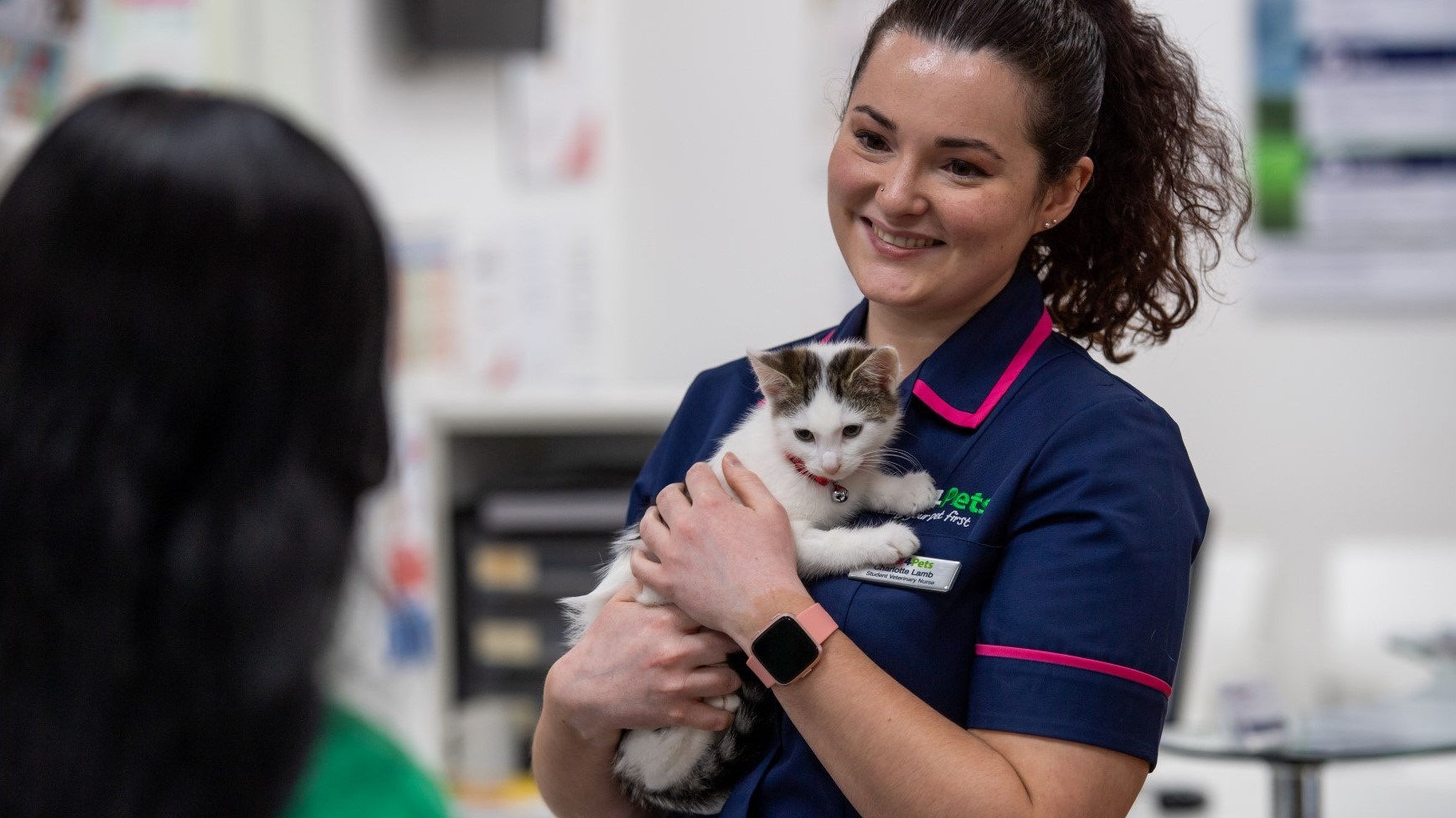
Cat Toxoplasmosis Advice & Care
Toxoplasma is a type of protozoa – a microscopic, single-celled parasite – which can also infect humans.
Many of the toxoplasma parasites will stay within the intestines of the cat, but some can migrate deeper into the body. Usually this spread is controlled by the cat’s immune system, and the travelling parasites end up in a resting state in muscles and in the brain. These pockets of infection in the tissue can also form in other affected species, such as mice and birds, and these can then infect a cat who catches and eats these prey species. Toxoplasma’s ability to ‘hide’ from the immune system in these resting pockets, or cysts, mean that many affected animals are infected for life unless they are given treatment.
Most infected cats show no signs at all of infection. In cats with a poor immune system, however, who are not able to suppress these travelling parasites, toxoplasma may show as clinical signs. This clinical disease is known as toxoplasmosis.
Read more about toxoplasma in cats
Cats become infected through any contact with the toxoplasma parasite, including:
- Direct contact with infected cat faeces
- Contact with a contaminated environment, as infectious eggs can survive in soil for several months in the right conditions
- Eating infected prey, such as mice and birds
- Eating undercooked meat
- Kittens can be exposed to toxoplasma whilst in the womb
Most cats do not show any signs of toxoplasma infection. Cats who are more likely to develop signs include kittens who are infected whilst in the womb and cats with suppressed immune systems, such as those with FIV or FeLV. In cats who do develop clinical disease, signs can include:
- High temperature
- Going off food
- Tiredness/lethargy
- Weight loss
- Fits or muscle tremors
- Loss of balance
- Muscle weakness
- Eye inflammation
- Shortness of breath
- Death, especially in new-born kittens
If your cat is experiencing any of these signs then make an appointment with your local Vets4Pets and get them checked out.
There is no Preventive medicine or vaccine to stop your cat from picking up toxoplasma, but some simple strategies can reduce the risk:
- Keep it clean. Frequently cleaning and disinfecting your cat’s areas, especially toilet areas, will help keep toxoplasma at bay.
- Reduce hunting. Although preventing hunting can be difficult in outdoor cats, simple tricks like attaching a bell to their collar can reduce the amount of predation – and supports local wildlife too!
- Cooked not raw. Don’t feed your cat raw meat, as this may contain pockets of toxoplasma.
- Cover outdoor sandpits. Cats love to toilet in sandpits, and toxoplasma levels can rise in areas frequented by lots of cats for toileting purposes.
- Empty it regularly. Toxoplasma eggs in cat poo need several days to become infectious. Keeping the litter emptied frequently will prevent any eggs that are present from infecting any other pets or people.
It is estimated that 500 million people worldwide have been infected by toxoplasma. In the UK it is thought that 20-30% of the UK population may have antibodies (markers in the blood which show exposure to a specific infection) to toxoplasma in their blood. Many infected humans have no signs, or just mild flu-like symptoms, but toxoplasmosis can be severe in babies and young children, the elderly, and people with a supressed immune system, such as those with AIDS or after organ transplants.
Despite the high numbers of people who appear to come across toxoplasma in their lives, it is thought relatively few of these exposures are from infected cats. This is because:
- Cats only have infectious faeces for less than two weeks
- Indoor cats that are not fed raw meat are unlikely to have toxoplasma
- Cats do not carry the parasite on their fur, so stroking your cat is unlikely to result in exposure
- Infection cannot be passed via bites or scratches
- Eggs in cat faeces take several days to become infectious, so regular litter tray cleaning means it is likely most eggs in cat faeces in the home will not lead to infection.
The more common routes of infection of people are:
- Eating raw meat
- Eating unwashed fruit and vegetables
- Drinking unpasteurised milk
- Contact with contaminated soil
- Infection in the womb, if the mother gets toxoplasma whilst pregnant.
It is this final route of infection that is most heavily seen in the media – it is for this reason that pregnant women are advised not to empty cat litter trays. While it is important to take normal hygiene precautions when handling cats, it should be noted that studies have shown that having a cat, or working with cats, causes little or no increase to your risk of contracting toxoplasma. If you think you may have been exposed to toxoplasma, and are concerned, always contact your doctor for advice.
If you think your cat might have a toxoplasma infection, the best thing to do is to go to your vet. They can do a full physical examination, and check your cat over from nose to tail.
To diagnose toxoplasma your vet may recommend laboratory tests, as well as looking at the clinical signs and taking a full history from you about your cat. These tests may look for the toxoplasma eggs themselves, which are invisible to the human eye, but as cats only shed these in their faeces for up to two weeks after an infection, this can miss cases. Blood tests can also be used to look for antibodies (markers in the blood which show exposure to a specific infection), which can suggest either an old or a new infection, although this is not 100% accurate. Taking tissue samples can provide a definite diagnosis, but this is invasive and may not be recommended.
If your cat does test positive for toxoplasma, this actually reduces the risk of you catching toxoplasma from them! Infected cats are infectious for less than two weeks, and are then very unlikely to shed infectious eggs in their poo again. This means cats that test positive are rarely an infection risk to other pets or their owners.
Cats who are negative for toxoplasma can be at a higher risk, as there is no way of knowing if or when they will become infected and start producing infectious faeces.
Health Plans to keep your cat healthy
At Vets4Pets we offer a range of Health Plans that make essential routine treatments more affordable. You'll save money on things like annual vaccinations, flea and worm treatment and routine health check-ups.

Cat Advice
Read more of our expert cat advice to keep your cat happy and healthy.
